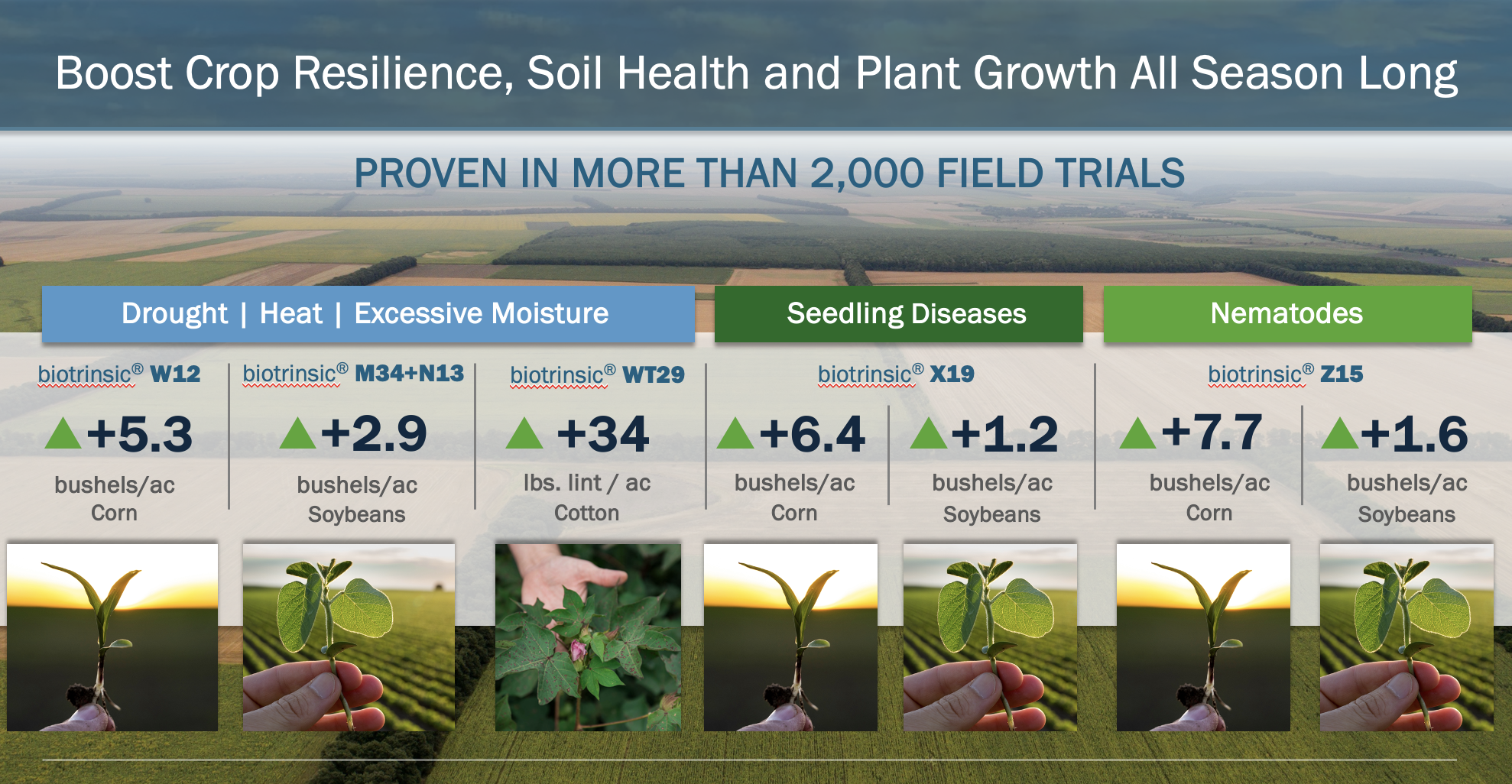For This Season's Weather Changes, Biologicals Bring Stability
Jim Cink has a PhD in toxicology and is Indigo Ag's Former Director of Marketing for Biological Solutions.
When it comes to weather, often the only thing people agree on is to wait a moment and it will change. And that is even more apparent in the 2024 weather predictions. According to DTN meteorologist John Baranick, the flip back and forth between El Nino and La Nina is not unprecedented, but is very rare. After going from three straight La Nina winters to an El Nino for the 2023-2024 winter, a quick change back to La Nina for summer 2024 is a likelihood, if not a guarantee. So what does this mean for U.S. farmers?
The Prediction: From Good Soil Moisture to Drought
The decay and transition of El Nino to a developing La Nina in 2024 will bring uncertainty and late season changes that could have big impact on crop development leading up to harvest. On the plus side, this transition is expected to drive spring rains in much of the crop-producing acreage across the U.S., with the exception of the Mid-North Central states of Iowa, Minnesota, and Wisconsin and in the Western South-Central state areas in Arizona, New Mexico, and Texas (NOAA U.S. Seasonal Drought Outlook March 21 – June 30, 2024). This means spring planting in a large swath of the U.S. could benefit from good soil moisture, which greatly benefits crop emergence and early plant health and vigor.
However, starting in June, this transition could quickly change to less rain and develop into drought conditions, just as spring planted crops reach flowering and early grain filling stages. This is a critical growth time where a lack of water can quickly decrease yield performance. To learn more, check out the article “5 Things to Know About a Developing La Nina.”
Preparation is Key
Planning ahead can set your crops up for success and increase their tolerance to drought and other fluctuating weather conditions. Proven to help crops perform better under drought and other environmental and biological challenges, Indigo Ag’s biological solutions portfolio of abiotic products use living endophytic microbes that, when applied to seeds prior to planting, grow into living symbiotic microbial communities in and around roots. These communities improve access to water, protect plant tissues from the damaging effects of reactive oxygen species (ROS), and improve access and uptake of critical soil macro- and micronutrients.

Farmers can also plan a head for drought and heat by incorporating cover crops into their operation. Cover crops help keep the soil covered to retain moisture while reducing weed stress.
As a living microbial community, Indigo Ag’s biological solutions can improve plant health and yield performance throughout the growing season, especially when dealing with weather-related stress conditions like drought, heat, and excessive moisture. To learn more about Indigo Ag’s biological products and the solutions they can provide go to www.indigoag.com/biologicals.
When it comes to weather, often the only thing people agree on is to wait a moment and it will change. And that is even more apparent in the 2024 weather predictions. According to DTN meteorologist John Baranick, the flip back and forth between El Nino and La Nina is not unprecedented, but is very rare. After going from three straight La Nina winters to an El Nino for the 2023-2024 winter, a quick change back to La Nina for summer 2024 is a likelihood, if not a guarantee. So what does this mean for U.S. farmers?
The Prediction: From Good Soil Moisture to Drought
The decay and transition of El Nino to a developing La Nina in 2024 will bring uncertainty and late season changes that could have big impact on crop development leading up to harvest. On the plus side, this transition is expected to drive spring rains in much of the crop-producing acreage across the U.S., with the exception of the Mid-North Central states of Iowa, Minnesota, and Wisconsin and in the Western South-Central state areas in Arizona, New Mexico, and Texas (NOAA U.S. Seasonal Drought Outlook March 21 – June 30, 2024). This means spring planting in a large swath of the U.S. could benefit from good soil moisture, which greatly benefits crop emergence and early plant health and vigor.
However, starting in June, this transition could quickly change to less rain and develop into drought conditions, just as spring planted crops reach flowering and early grain filling stages. This is a critical growth time where a lack of water can quickly decrease yield performance. To learn more, check out the article “5 Things to Know About a Developing La Nina.”
Preparation is Key
Planning ahead can set your crops up for success and increase their tolerance to drought and other fluctuating weather conditions. Proven to help crops perform better under drought and other environmental and biological challenges, Indigo Ag’s biological solutions portfolio of abiotic products use living endophytic microbes that, when applied to seeds prior to planting, grow into living symbiotic microbial communities in and around roots. These communities improve access to water, protect plant tissues from the damaging effects of reactive oxygen species (ROS), and improve access and uptake of critical soil macro- and micronutrients.

Farmers can also plan a head for drought and heat by incorporating cover crops into their operation. Cover crops help keep the soil covered to retain moisture while reducing weed stress.
As a living microbial community, Indigo Ag’s biological solutions can improve plant health and yield performance throughout the growing season, especially when dealing with weather-related stress conditions like drought, heat, and excessive moisture. To learn more about Indigo Ag’s biological products and the solutions they can provide go to www.indigoag.com/biologicals.
Indigo Ag does not guarantee any specific outcomes. A wide range of variables affect product performance, your results may vary. Additional terms, conditions and limitations may apply. Product may not be available in all areas.


